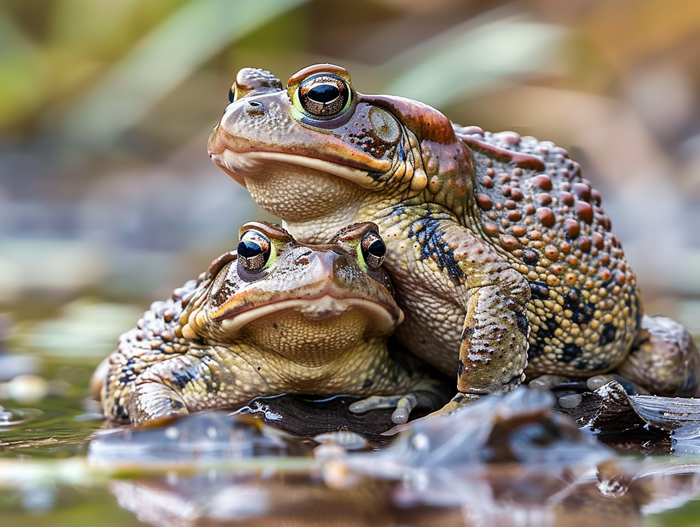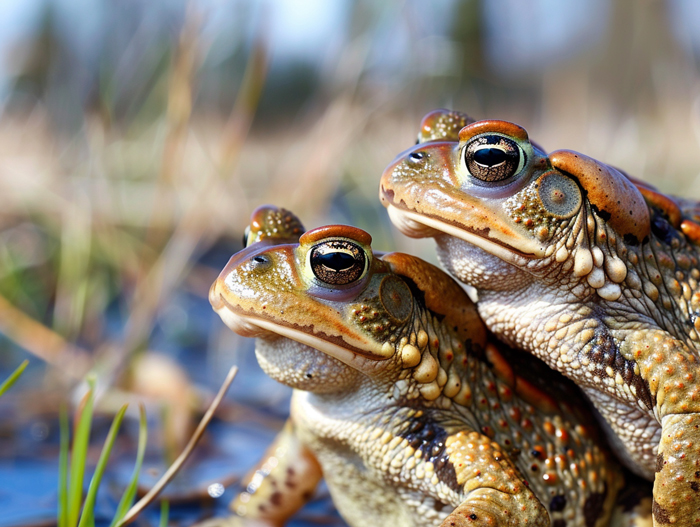Curious about the intriguing area of toads and their life cycle? In this text, you’ll jump into the captivating journey from egg to adult toad. Understanding the stages of a toad’s life cycle can offer insights into their development and survival strategies.
From tiny eggs to tadpoles and finally to fully-formed toads, each stage in a toad’s life cycle is filled with wonder and adaptation. Discover how these amphibians navigate their environment, evade predators, and eventually thrive in their ecosystems. Join us as we unravel the mysteries of the toad life cycle and gain a newfound appreciation for these remarkable creatures.
Key Takeaways
- Toad life cycle consists of stages from egg to adult, showing remarkable adaptation and survival strategies.
- The stages include egg stage, tadpole stage, young toad stage, and adult toad stage, each crucial for development.
- Environmental factors like temperature, humidity, and habitat availability significantly impact toads’ life cycles.
- Toads face threats from predators, habitat loss, and pollution, affecting their survival rates.
- Understanding the intricacies of the toad life cycle can lead to conservation efforts for protecting these amphibians in the wild.
Overview of Toad Life Cycle

Begin on a journey into the remarkable world of toads and explore their intriguing life cycle. Understanding the toad life cycle sheds light on their development, survival, and adaptation in various environments. Below is an overview that unravels the stages of a toad’s life cycle, from egg to adult:
Egg Stage:
- Toad eggs are typically laid in water, forming gelatinous clusters.
- These eggs hatch into tadpoles within days to weeks, depending on species.
- Tadpoles breathe through gills and mainly feed on algae and plant matter.
Tadpole Stage:
- Tadpoles gradually develop hind legs, followed by front legs.
- During this stage, they undergo metamorphosis, developing lungs for breathing air.
- Metamorphosis is a crucial transformation where tadpoles morph into young toads.
Young Toad Stage:
- At this stage, young toads leave the water and become primarily terrestrial.
- They develop adult features like skin texture, coloration, and body shape.
- Young toads start hunting for small insects and transitioning to an adult diet.
Adult Toad Stage:
- Fully developed adult toads are adept at living both on land and in water.
- They play a vital role in controlling insect populations in their habitats.
- Hibernation is a common behavior where toads burrow to survive harsh conditions.
- Adult toads partake in mating rituals, often characterized by calls to attract mates.
- Females lay eggs, restarting the cycle and ensuring the continuation of their species.
Investigate into the intricacies of the toad life cycle to grasp the marvel of these amphibians’ development and survival strategies. Embrace the resilience of toads as they navigate through the stages of life, adapting to diverse ecosystems and thriving in the wild.
Stages of a Toad’s Life Cycle
Understand the remarkable journey of a toad through its various life stages. The toad life cycle comprises distinct phases, each essential for its development and survival.

Egg Stage
- Toad eggs are typically laid in long gelatinous strands.
- These eggs are fertilized externally by the male releasing sperm over them.
- They hatch into tadpoles within days, depending on environmental conditions.
Tadpole Stage
- Tadpoles have gills for breathing underwater.
- They feed on algae and eventually develop hind legs first.
- Gradually, they absorb their tails, transitioning into young toads.
- Young toads possess a combination of aquatic and terrestrial features.
- They start developing lungs and adapting to life on land.
- During this stage, they undergo significant growth and maturation.
Investigate into the intricacies of each stage to grasp the marvel of a toad’s life cycle. Appreciate the resilience and adaptation of these amphibians as they navigate through the complexities of their environment.
Factors Affecting Toad Life Cycle

Environmental Factors
Toads’ life cycles are greatly influenced by their surroundings. Temperature, humidity levels, and habitat availability all play crucial roles in each stage of the toad life cycle.
- Temperature: Toad eggs require specific temperatures to hatch properly. Extreme temperatures can negatively impact the development of eggs and tadpoles.
- Humidity Levels: Adequate moisture levels are vital for toads, especially during their early stages. Low humidity levels can lead to dehydration and hinder growth.
- Habitat Availability: Changes in the environment, such as habitat destruction, can disrupt the toads’ life cycle. Loss of suitable breeding sites can have detrimental effects on their populations.
Predators and Threats
Toads face various challenges from predators and threats that can impact their survival rates.
- Predators: Common predators of toads include snakes, birds, and mammals. These predators can significantly reduce the population of toads in an area.
- Habitat Loss: Destruction of natural habitats due to human activities poses a severe threat to toads. Loss of breeding grounds and food sources can lead to population decline.
- Pollution: Toads are sensitive to pollution, which can contaminate their habitats and water sources. Pollution can have harmful effects on their health and reproductive success.
Remember, understanding these factors can help in conserving and protecting toads in the wild.
Conclusion
You’ve learned about the intricate life cycle of toads and how various factors can influence their survival. Environmental conditions like temperature, humidity, and habitat play a crucial role in shaping their existence. From facing threats from predators to dealing with habitat loss and pollution, toads have a challenging journey. By understanding these dynamics, we can work towards conserving and protecting these fascinating creatures in their natural environments. Remember, every small effort counts in ensuring the well-being of toads for generations to come.

Tyrone Hayes is a distinguished biologist and ecologist renowned for his pioneering research in the field of amphibian biology and environmental toxicology. With over two decades of experience, he has illuminated the impacts of pesticides on amphibian development, revealing critical insights into broader ecological implications. Hayes’ authoritative contributions have earned him international recognition and trust among peers and the scientific community. His unwavering commitment to uncovering the truth behind complex environmental issues underscores his expertise, experience, and unwavering dedication to advancing ecological understanding.
